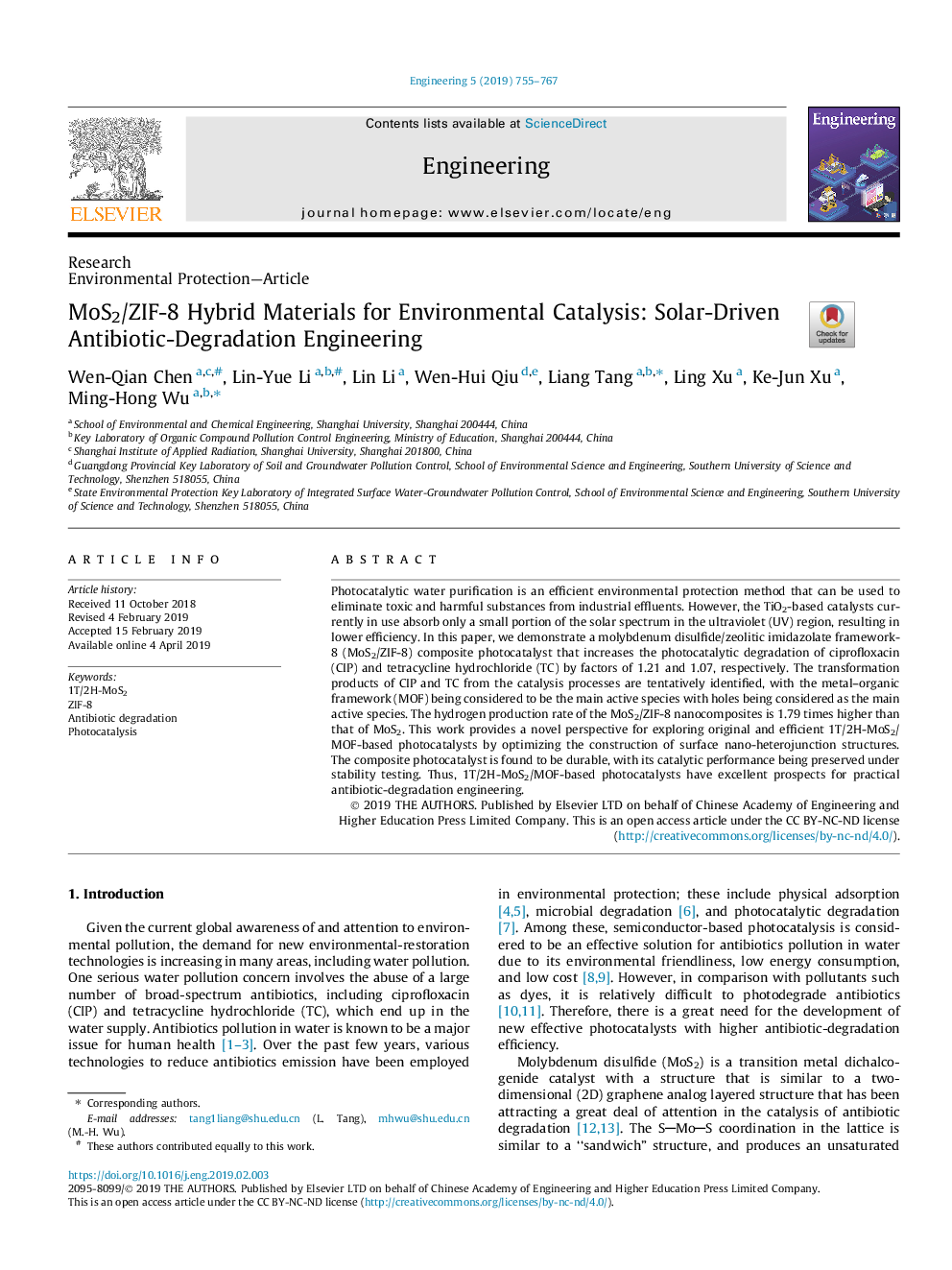| Article ID | Journal | Published Year | Pages | File Type |
|---|---|---|---|---|
| 13433266 | Engineering | 2019 | 13 Pages |
Abstract
Photocatalytic water purification is an efficient environmental protection method that can be used to eliminate toxic and harmful substances from industrial effluents. However, the TiO2-based catalysts currently in use absorb only a small portion of the solar spectrum in the ultraviolet (UV) region, resulting in lower efficiency. In this paper, we demonstrate a molybdenum disulfide/zeolitic imidazolate framework-8 (MoS2/ZIF-8) composite photocatalyst that increases the photocatalytic degradation of ciprofloxacin (CIP) and tetracycline hydrochloride (TC) by factors of 1.21 and 1.07, respectively. The transformation products of CIP and TC from the catalysis processes are tentatively identified, with the metal-organic framework (MOF) being considered to be the main active species with holes being considered as the main active species. The hydrogen production rate of the MoS2/ZIF-8 nanocomposites is 1.79 times higher than that of MoS2. This work provides a novel perspective for exploring original and efficient 1T/2H-MoS2/MOF-based photocatalysts by optimizing the construction of surface nano-heterojunction structures. The composite photocatalyst is found to be durable, with its catalytic performance being preserved under stability testing. Thus, 1T/2H-MoS2/MOF-based photocatalysts have excellent prospects for practical antibiotic-degradation engineering.
Related Topics
Physical Sciences and Engineering
Computer Science
Computer Science (General)
Authors
Wen-Qian Chen, Lin-Yue Li, Lin Li, Wen-Hui Qiu, Liang Tang, Ling Xu, Ke-Jun Xu, Ming-Hong Wu,
